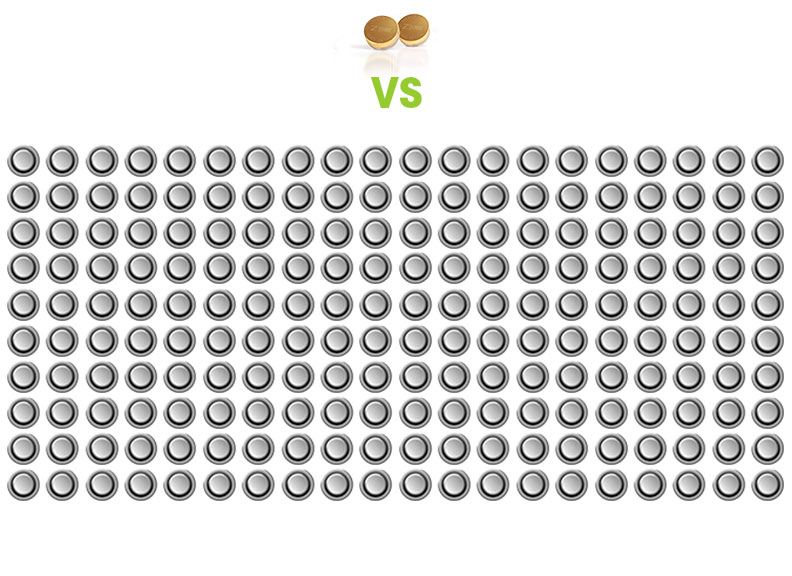
One pair of ZPower hearing aid batteries can keep more than 200 disposable batteries out of the landfill.
Image: ZPower
Lithium based technologies have been dominant in the battery arena since Sony commercialized the first Li-ion battery in 1991. ECS member Jeff Ortega, however, believes that a different material holds more promise than its lithium competitor in the world of microbattery technology.
During the 229th ECS Meeting, Ortega presented work that focused on the analysis of data from commercially available rechargeable Li-ion and Li-polymer cells. He then compared the silver-zinc button cells of ZPower, where he currently serves as the company’s director of research. His results showed that the company’s silver-zinc button cells offer both greater capacity and greater density than their Li-ion and Li-polymer counterparts. Additionally, Ortega stated that the cells are also generally safer and better for the environment.
[MORE: Read Ortega’s meeting abstract.]According to Ortega, the small silver-zinc cells have 57 percent greater energy density than both types of lithium based calls. Their potential applications including medical devices, body worn sensors, wearables, and any other microbattery application that demands long wear time. Currently, ZPower has implement these cells in hearing aid technologies.
“The ZPower Rechargeable System for Hearing Aids makes it easy to convert many new and existing hearing aids to rechargeable technology,” says Ortega in a statement. “The Rechargeable System offers a full day of power, charges overnight in the hearing aids, takes the place of an estimated 200 disposable batteries and lasts a full year. The ZPower hearing aid battery is replaced once per year by a hearing care professional, so the patient never has to touch a hearing aid battery again.”

